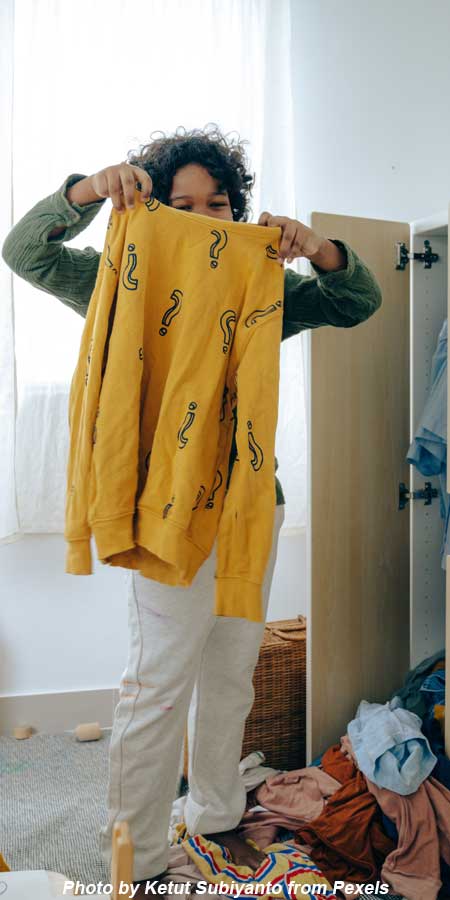“Will anyone be happy if I saved this?” – Margareta Magnussen
As an octogenarian mother and grandmother, Margareta Magnussen faces the end of her life with concern for the state of her affairs when she departs this earth. She does not want to be a burden to her loved ones. In that spirit, she took up the mantle to encourage the elderly to clean house in The Gentle Art of Swedish Death Cleaning: How to Free Yourself and Your Family from a Lifetime of Clutter.
Having participated in my mother-in-law’s estate by marriage and attended to my parents’ estate as executrix, I’m keenly aware of the effort involved in finding new homes for decades’ worth of belongings. While it would have been efficient to rent a dumpster and be done with it, I don’t want to add unnecessarily to our land fills while there are things that continue to have useful lives. But it takes time to process all that stuff in an ecofriendly way. (I’m still in the midst of it!)
Recognizing the time commitment, Margareta suggests that we launch döstädning at age 65. We set aside time regularly to slowly and unobtrusively rid ourselves of things we no longer want or use (and may not even notice we have). We take all due moments to relive the memories that the items may conjure up and say good-bye to them. We let friends and family have first crack at taking them on and share any stories that may go with them. We extend our network to third parties through direct sales, auctions, or charitable donation. And we sustain motivation by looking forward to a finish line in which our lives are simpler and less cluttered.
A phased effort takes a seemingly overwhelming task and chunks it into manageable efforts. Initial phases focus on areas in which there is little to no sentimental attachment – e.g., storage areas, garages. It develops organizational skills and knowledge of outlets for recycling all the while building confidence in the task at hand. The items that remain have a defined use and a logical place for residence.
 When going through clothes closets, the easy discards include items that do not fit, have no anticipated use, or have exceeded their useful life. What remains should look good together and find expression regularly in the day-to-day or special occasion wardrobes. If lacking powers of discernment, competent stylists can lend a hand.
When going through clothes closets, the easy discards include items that do not fit, have no anticipated use, or have exceeded their useful life. What remains should look good together and find expression regularly in the day-to-day or special occasion wardrobes. If lacking powers of discernment, competent stylists can lend a hand.
Memorabilia can be a stumbling block if allowed to derail progress on the downsizing effort. I’m not partial to things, but I’m highly attached to pictures and the memories they carry with them. Technology provides an enticing solution. I digitized the family’s prints and 35mm slides, and cleaned them up using PhotoShop. The resulting quality far outpaces the originals, and I’ve decluttered a good deal of closet space to boot. I also find that I look at the pictures far more often than when I housed them in boxes and albums. I’ve just made sure to have back-ups in my safe deposit box and cloud-based storage!
I chuckled when Margareta covered the topic of things you would never want your children or grandchildren to know about. While she cited the example of sex toys, I hearkened back to my mother-in-law’s hope chest and the discovery of her old journals. Her daughters delighted in reading the entries aloud. Not sure I’d want others sharing my private thoughts…
Part of döstädning entails training oneself to be a window-shopper instead of a consumer. There can be joy in imagining what it would be like to own something in lieu of succumbing to the temptation to buy it. Most of us just don’t need to own more stuff and may get little use out of impulse purchases.
I’m ready to start another phase of döstädning in league with my husband. While this activity falls way outside his list of pleasurable things to do, I’m encouraged by his willingness to declutter and find peace in a future state of minimalism.